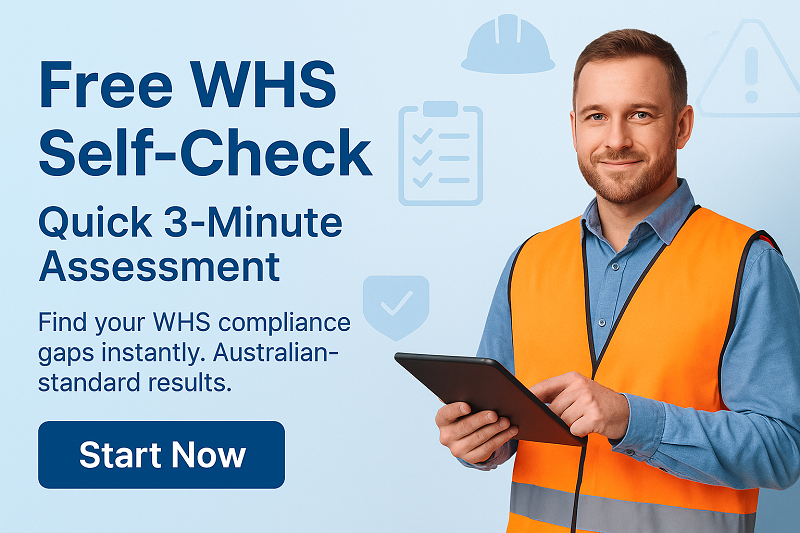“`html
If you’re in the business of handling pallet trucks, especially when they’re heavily loaded, safety has to be at the forefront of your mind. The Safe Work Method Statement (SWMS) Template for Pulling and Pushing Pallet Trucks Heavily Loaded is designed to help you navigate the complexities of workplace health and safety with ease and efficiency.
Key Features:
- Pre-filled and Comprehensive: Our SWMS template comes thoughtfully pre-filled with industry-relevant information, providing a strong foundation upon which you can build your specific requirements. It’s comprehensive, yet easy to understand, ensuring nothing important slips through the cracks.
- Fully Editable and Customisable: Designed in Microsoft Word format, this template offers seamless editing to adapt it to your unique work environment. Whether you’re making small tweaks or big changes, personalising to suit your specific needs couldn’t be easier.
- Includes the Scope of the Project and the Project Details: Clearly outline what the project entails and its specific details right at the outset. This sets the stage for a unified understanding among all team members, keeping everyone on the same page.
- Checklist of High-Risk Machinery On Site: An essential component, this checklist ensures that any high-risk machinery present is accounted for, thus prioritising safety and preparedness from the get-go.
- Space for Recording Any Staff Training: Efficient training record-keeping is vital. Use the designated space to document staff competence and readiness, which is crucial for both compliance and operational excellence.
- Before and After Risk Ratings: With spaces allocated for both initial and residual risk ratings, you can visually track the effectiveness of your safety interventions, providing a clear picture of how risks are managed over time.
- Resources for Use of Legislative References: Keep abreast of legislative compliance with resources that guide you through current regulations, helping you make informed decisions about worker safety.
- All PPE Required: A comprehensive list ensures every piece of Personal Protective Equipment necessary for a safe operation is included, leaving no room for oversight.
- Risk Assessment and Risk Assessment Matrix: Conduct thorough risk assessments and utilise an integrated matrix for rating those risks. This structured approach facilitates clearer understanding and better management of potential hazards.
- Checklist to Ensure All Requirements Have Been Covered: Before implementing the SWMS, double-check with our comprehensive checklist that no requirement is left unaddressed—ensuring solid preparation for every work task.
- Sign Off Page for All Workers and Responsible Persons: Maintain accountability and transparency with designated sign-off sections. This not only confirms task comprehension but also promotes collective responsibility.
- Easy to Use, Easy to Customise: Tailored for ease of use, this template is intuitive and straightforward, so it’s simple enough to navigate even if you’re new to SWMS documentation.
- Suitable for Large Contracts and Tenders: Especially beneficial for tier 1 contractual work, where stringent safety documentation is paramount, this template scales to meet varying contract demands effortlessly.
- Quick Delivery by Email: Time is money, and we respect yours. Upon purchase, access to your template is swiftly delivered via email, ensuring you’re equipped and ready without delay.
This SWMS template for pulling and pushing heavily loaded pallet trucks is crafted to assist—not promise miracles. It’s designed to be a practical tool helping you uphold Australia’s rigorous safety standards nuances with confidence—and just a touch of personality thrown in.
“`
The Pulling Pushing Pallet Trucks Heavily Loaded Safe Work Method Statement (SWMS) includes the following job steps and related potential hazards:
- 1. Preparation
- Unstable loads
- Inadequate training
- 2. Pre-Operational Checks
- Faulty equipment
- Slips
- trips and falls
- 3. Moving Empty Pallet Truck
- Collision with objects or personnel
- Musculoskeletal injuries
- 4. Loading the Pallet Truck
- Incorrect manual handling
- Falling items
- 5. Operating Loaded Pallet Truck
- Tipping accidents
- Collisions
- 6. Navigating Obstacles
- Struck by objects
- Collision with other equipment
- 7. Unloading the Pallet Truck
- Dropping items
- Incorrect manual handling
- 8. Parking and Securing Pallet Truck
- Inadequate securing of pallet truck
- Tripping hazards
- 9. Completion and Clean-up
- Improper disposal of waste
- Hazardous materials left unattended
- 10. Maintenance of Pallet Truck
- Incorrect use of tools
- Exposure to hazardous substances
- 11. Safety Inspection of Truck
- Electrical faults
- Worn-out parts
- 12. Towing Pallet Truck
- Load instability
- Excessive speed
- 13. Using Lifting Equipment
- Falls from height
- Equipment failure
- 14. Reporting Incidents and Hazards
- Inadequate communication
- Delay in reporting
- 15. Emergency Procedure Training
- Lack of familiarity with procedures
- Panic in emergency situations
- 16. Wearing Appropriate PPE
- Inadequate PPE
- Non-compliance to PPE usage
- 17. Manual Handling Training
- Insufficient training
- Improper posture
- 18. Daily Toolbox Talks
- Miscommunication
- Complacency
- 19. Regular Breaks to Avoid Fatigue
- Overworking
- Dehydration
- 20. Transferring Loaded Pallet Truck
- Load instability
- Moving heavy objects
Each Safe Work Method Statement has specific content that is referenced to, but not limited to a number of authorities such as Codes of Practice, Regulations, Australian Standards or the Act.
The Pulling Pushing Pallet Trucks Heavily Loaded Safe Work Method Statement (SWMS) references:
Ordering only takes a few minutes. Upon ordering completion, a link will be sent to your email address to download your documents, then add your company logo to the top of the header and you’re finished.


